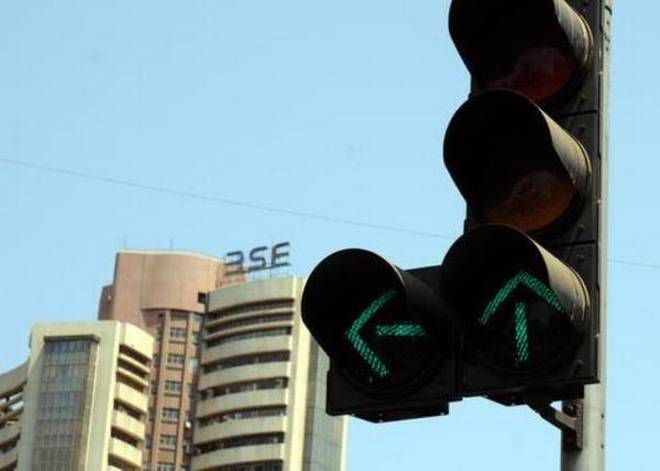Banks may require more capital for higher provisioning requirements to resolve stressed assets. However, it is not prudent to expect the Centre to bear the entire burden of capital infusion, says S.S.Mundra, deputy governor, Reserve Bank of India in an interview. Edited excerpts:
With the RBI asking banks to refer 12 large defaulters to the National Company Law Tribunal (NCLT), can we expect that the recognition of stressed assets is complete for now?
Recognition also involves diagnosis. So, in any meaningful resolution, there has to be recognition. Recognition started right from the asset quality review in late 2015. Also, it is not that resolution has started just now. Several initiatives were taken which are the building blocks of recognition, right from setting up a data repository, introducing the JLF [joint lenders forum] mechanism then giving various options like S4A, SDR, 5/25 — these were the building blocks for resolution. Now, all these have culminated into an ordinance. And [the] good part is ordinance is timed with the IBC [Insolvency and Bankruptcy Code]. Two years back there were so many resolution tools but there was no bankruptcy law in the country. Now that we have a bankruptcy law, it is time we [can] take the resolution process to a logical conclusion.
Of the top 500 cases taken up by the RBI’s Internal Advisory Committee, there are 488 cases that banks need to resolve in 6 months. Banks have sought relaxation in debt recast norms. Will the RBI look into it?
There is a whole wish list from the banking system. If you look at the wish list, some of them may be categorised as seeking the relaxations while some of them can be seen as modifications. My broad sense is that since the structure has been in the making for sometime, the room for such relaxation which only means buying more time, I don’t think this is a feasible idea. Yes, there may be merit for some modifications which are more tuned with reality and ground situation. The regulation side of RBI is looking into those issues.
Do you think 6 months is a reasonable time to resolve 488 accounts?
When you look at 488 as one bunch, it looks big. But if you go down in the 500 list of NPAs, and when you reach the 500th NPA, ticket size would be ₹150 or ₹170 crore — something which is not too big, which may be handled even from a zonal or regional office of a bank. For 488, when distributed across a number of banks where the lead bank would be different, so each bank is required to deal with some cases, it will not be too large.
RBI has said the 12 accounts which are being referred to NCLT constitute 25% of the system’s gross NPA. What is the proportion of NPAs in the 500 accounts?
Though I have not calculated the figure, it would a substantial proportion.
By solving the 500 accounts, a substantial amount of system NPAs — which is about ₹7 lakh crore — will be resolved. It is clear that once these 500 cases are taken care of, it takes care of a large percentage of stressed assets. Whatever is remaining, it is normal in the system at any given point of time.
Do you think the government should increase capital allocation in public sector banks?
This resolution framework, whichever way you look at it, it will entail capital. Once you complete the process, there will be provisioning requirement which may not come out of the current profitability of banks. So [at the] end of the day, it will all entail capital requirement. But to expect that the government will only be the provider of this capital is not a right way to think.
At the same time, all this capital will come without government support is also not the right thing to assume.
The key point is all the available options will be required to be explored. You can get some capital from the government, you can raise some capital from the market, you try to get out of the non-core investment, you also try to dispose of some non-core assets, etc. It will be a combination and each bank will have to work out its own strategy.
As on September 30, 2016, the gross NPA ratio of the system was 9.1% while the stressed asset ratio was 12.3%. What is the position as at March end?
If you look at March 31, the gross NPAs of the system was 9.51% or so, while for public sector banks it is 12.3%. Stressed asset for banking system will be 12% and for the public sector it will be 15% plus.
So, the March numbers have not gone up significantly as compared to the September numbers…
Yes, while there has been addition to NPA, but the pace of NPA growth has slowed down. So incremental NPA addition has come down in the last quarter as compared to the previous few quarters.
When do you see credit growth to come back?
Loan growth is larger issue. Saying that stressed asset is the only factor for slow credit growth is a simplistic assumption. Incremental lending will come from economic growth, it will come from fresh capacity creation, as we still have unutilized capacity. Once the demand picks up, first thing that will happen is the utilization of that capacity. That will entail credit demand. But that credit demand will be more in the nature of working capital. Resolution of NPA, growth picking up, investors confidence, all these are ingredients for credit growth.
Also, one important point is, if you see last few years, the incremental capacity creation was by a handful of groups. And majority of them are facing the asset quality issue. I don’t think they will be in a position any time soon to think about fresh investments. So new players have to come in.
Were there any deposit or lending restrictions of the five banks on which PCA have been imposed recently?
There is no blanket restriction either on lending or deposits. For example, what we suggest is that you need not offer very high rate for bulk deposits which will not be meaningful from the point of view of profitability. But those are broad guidelines and there is no blanket restrictions.
There are three banks which were under PCA for over 2 years now. However, the performance of these banks have not improved. What is the road map for these banks?
If you look at it closely, it is a mixed bag. One important thing which happened is that after putting them under PCA, the rate at which the deterioration was setting in is certainly checked. While there is no great sudden improvement, which is unrealistic to expect also, but the pace of deterioration has been arrested. Yes, there are certain parameters which needs improvement like GNPA which has accelerated. But they are not outlier in that. Their GNPA has deteriorated in the same fashion as was the world at large. But if you look at other parameters, like some of them have come to profit from loss, they have come to the positive RoA territory, some of them were able to improve their operating profit etc. It is always going to be a long haul.
RBI had asked some banks to increase provisioning in Q4. What was the reason?
When AQR happened, that clearly identified some accounts. Some accounts were given time till March 2017 to take care. In that process, if there are accounts which are still left which should have been provided for, those are kind of things which come out of the supervisory process. Banks should get a right message and streamline their processes to ensure that there is no need for such occurrence in future.
[“source-thehindu”]




